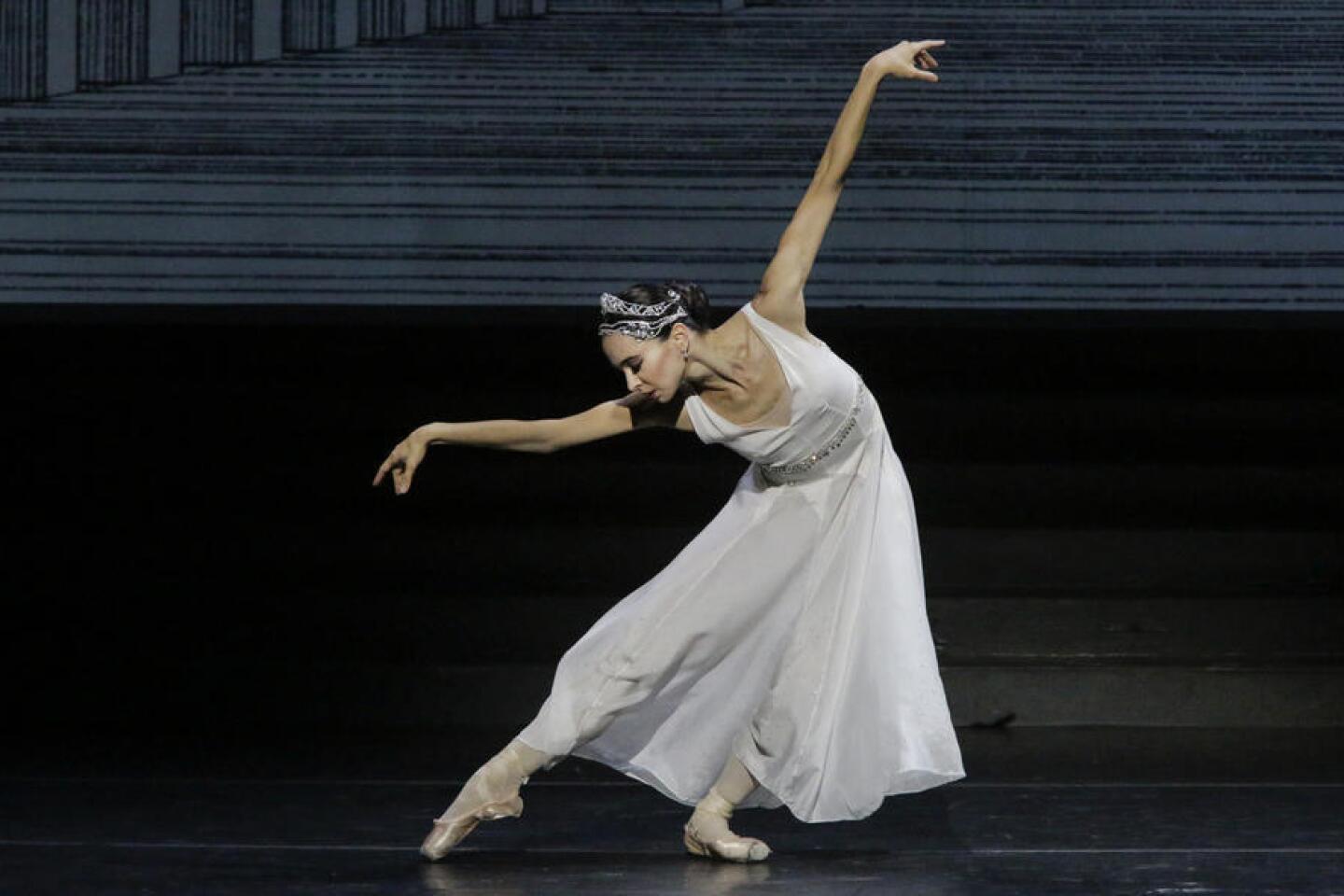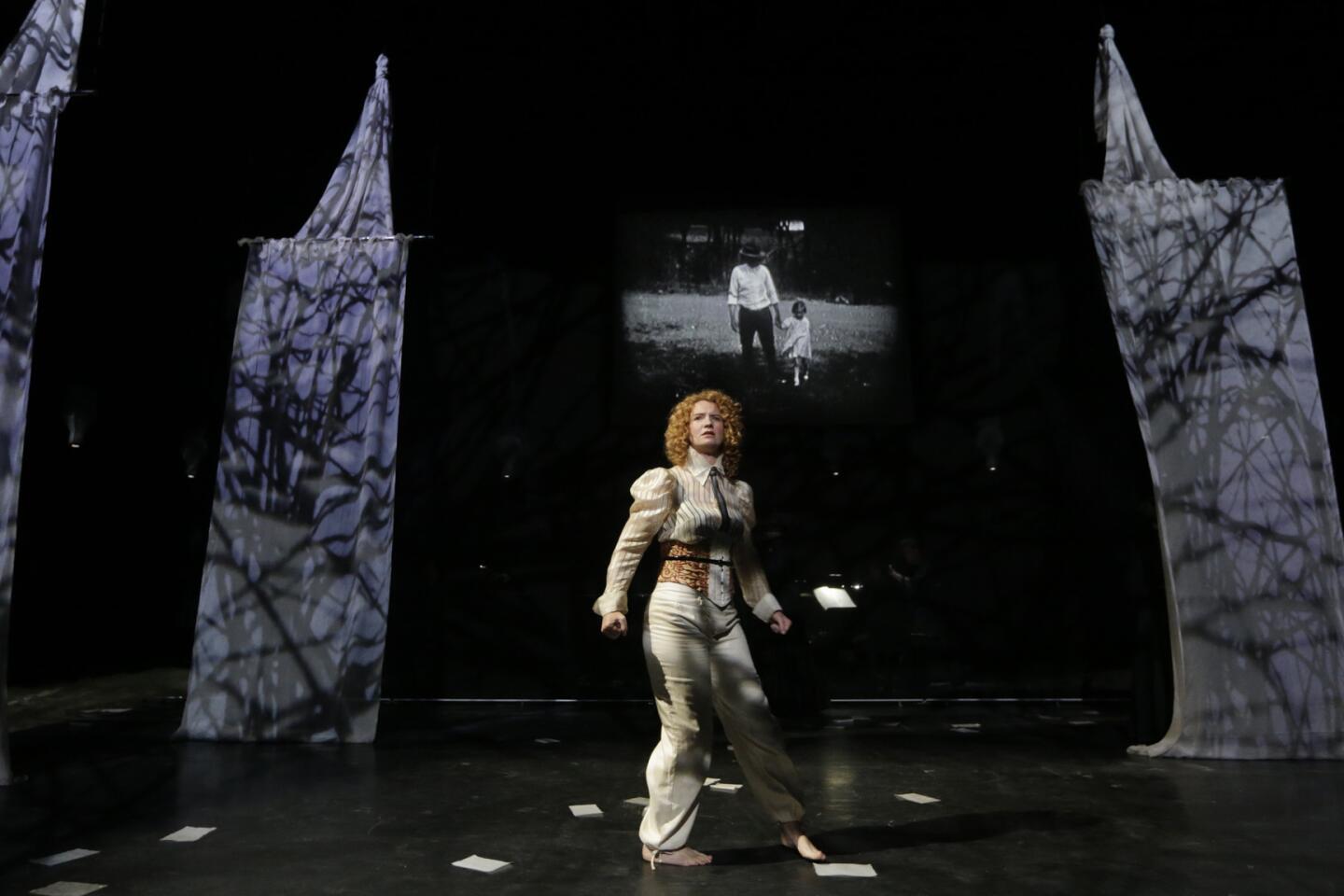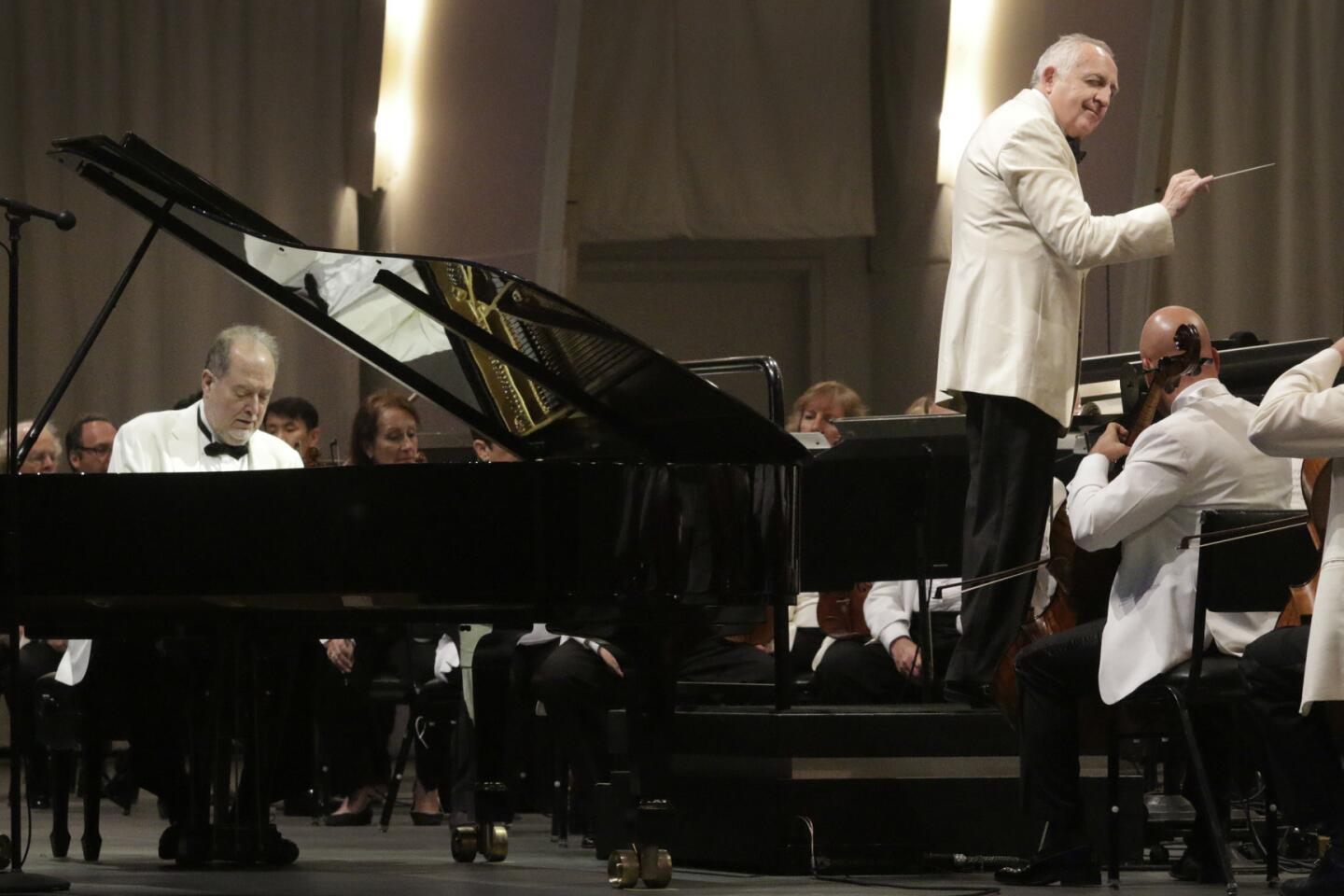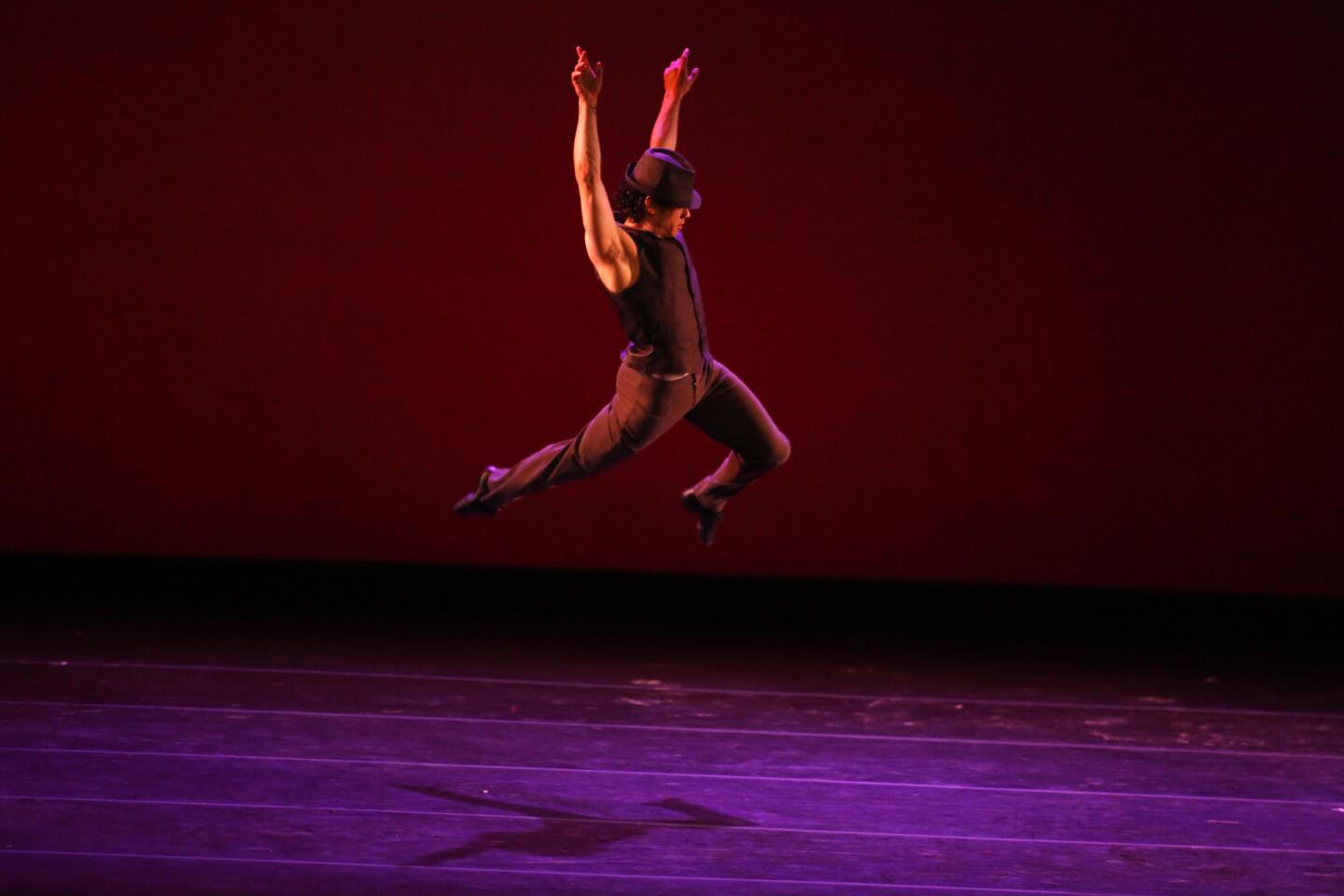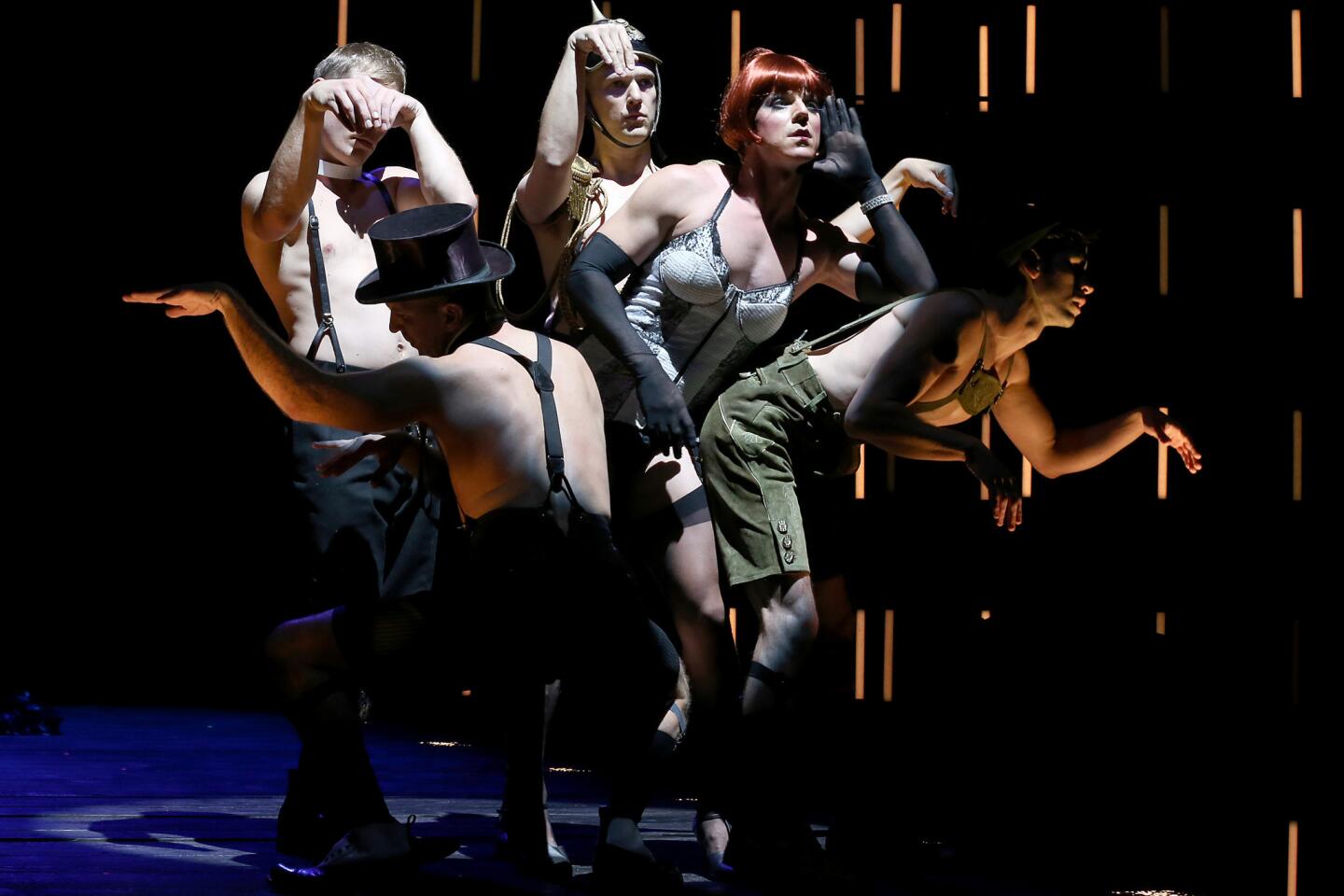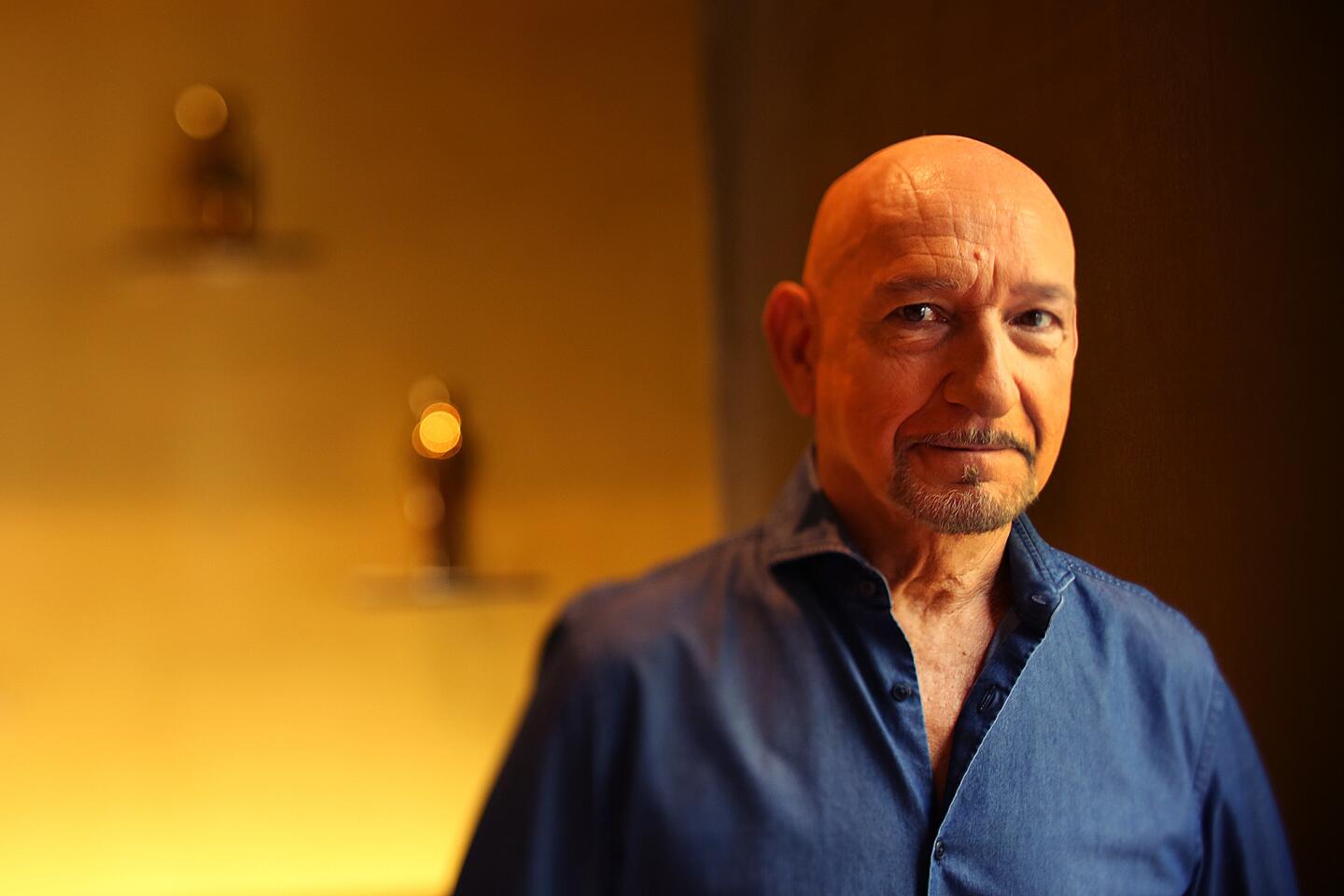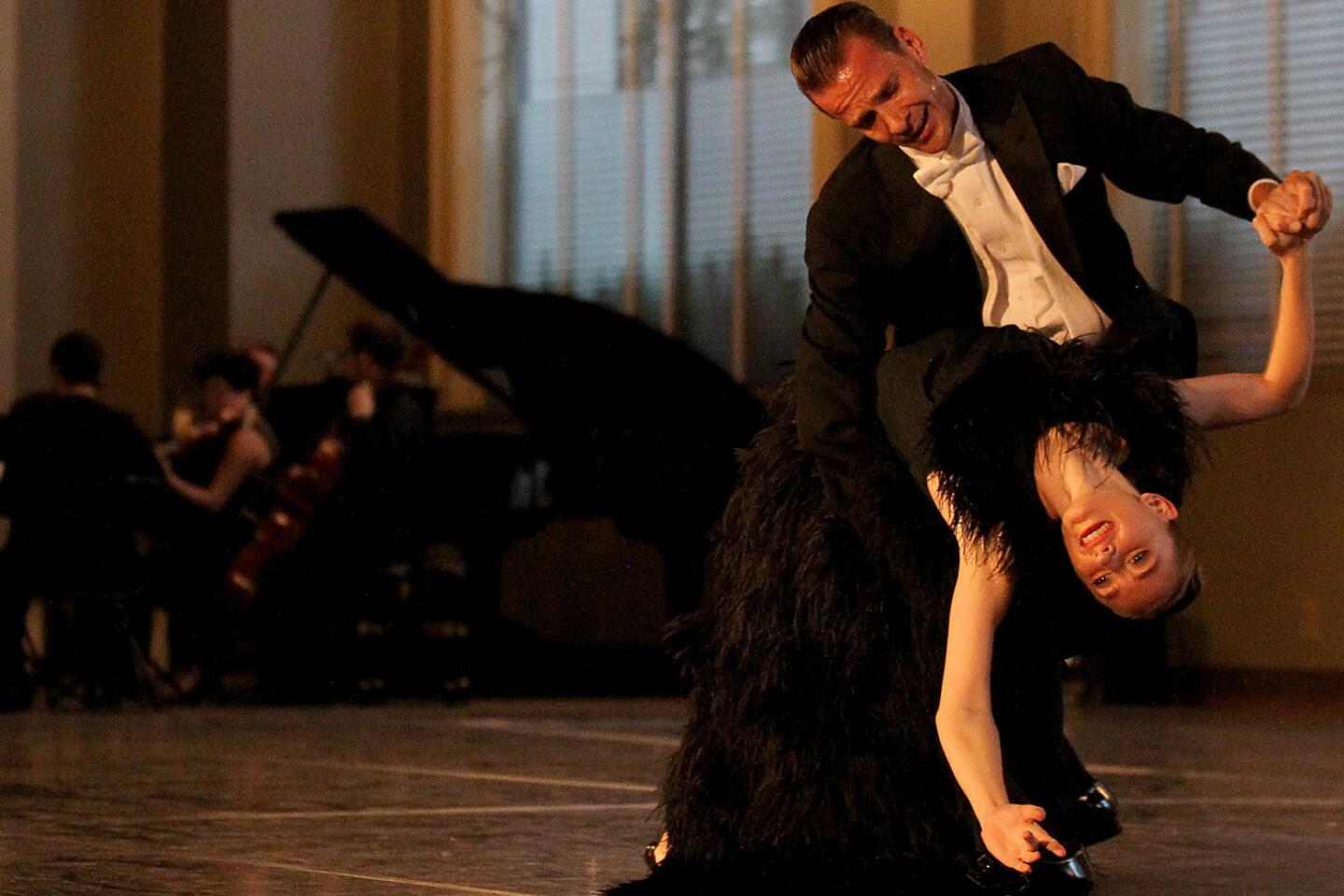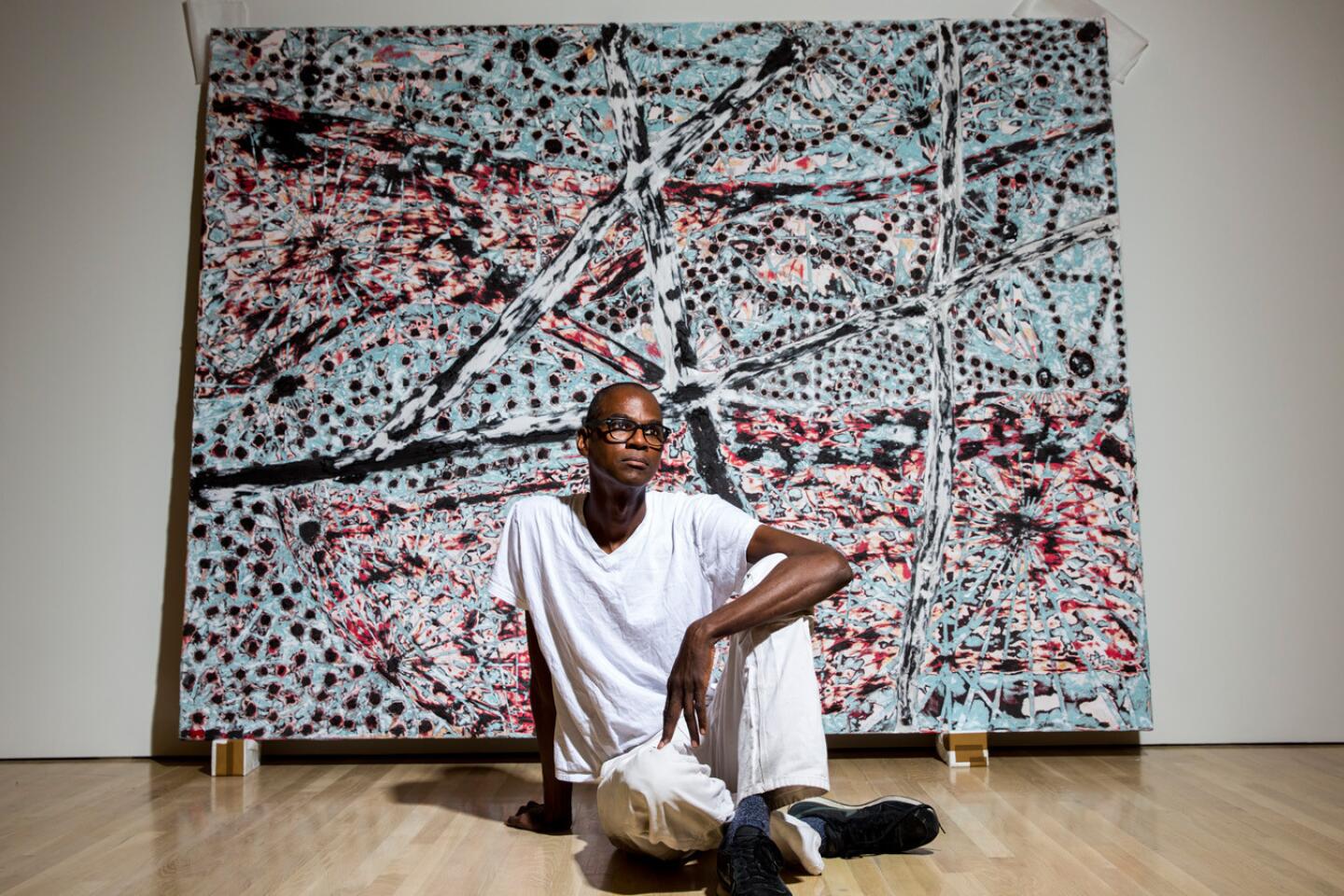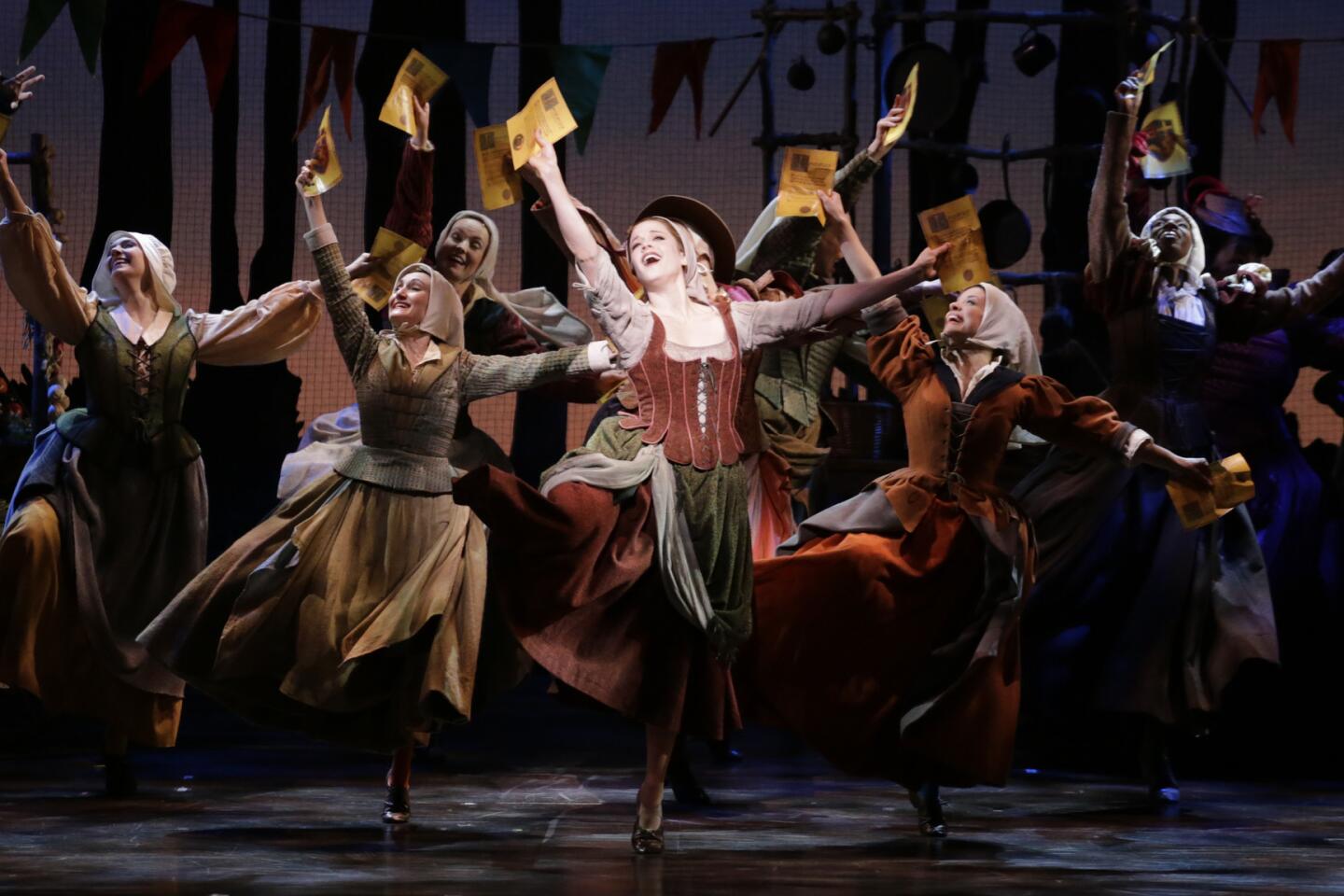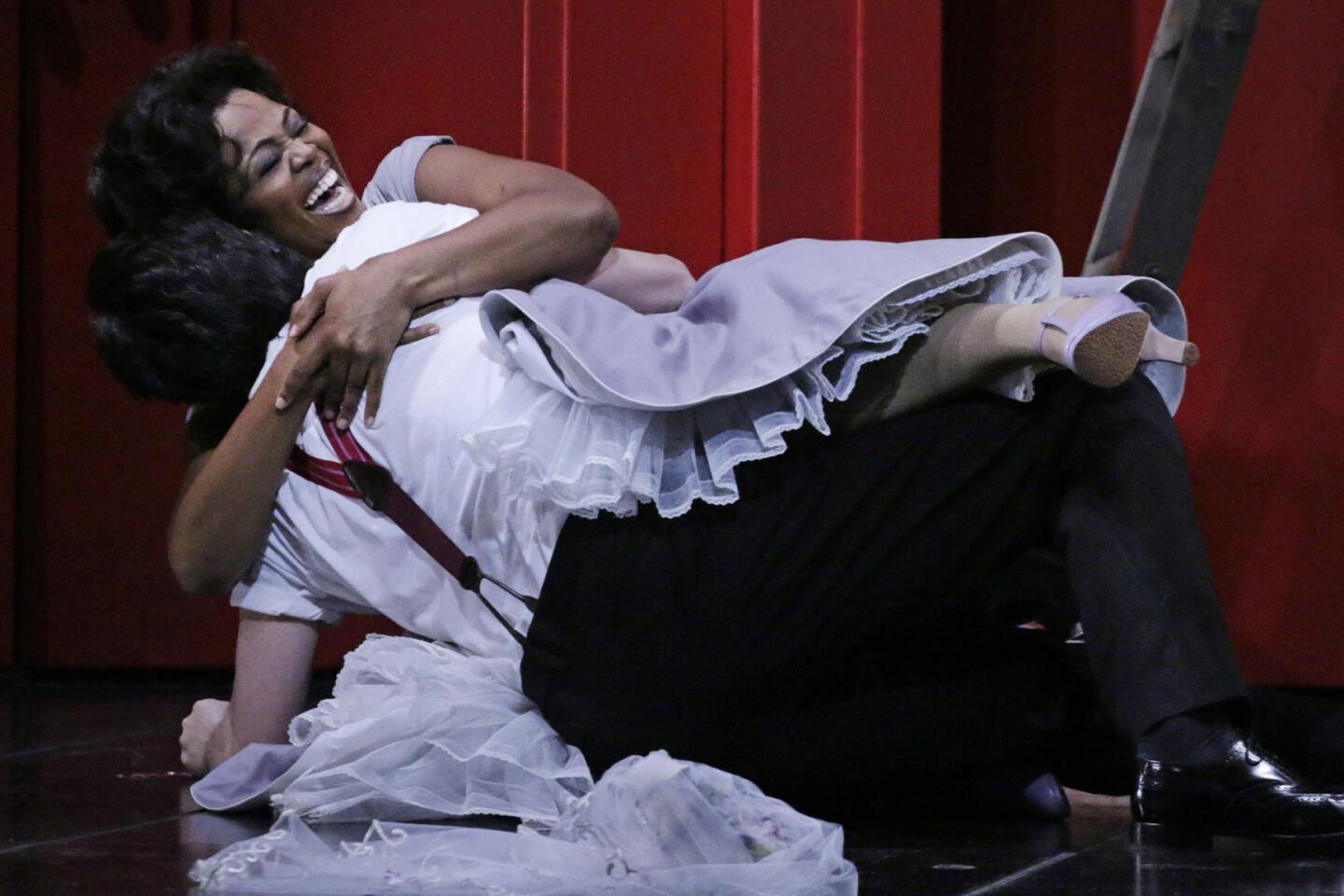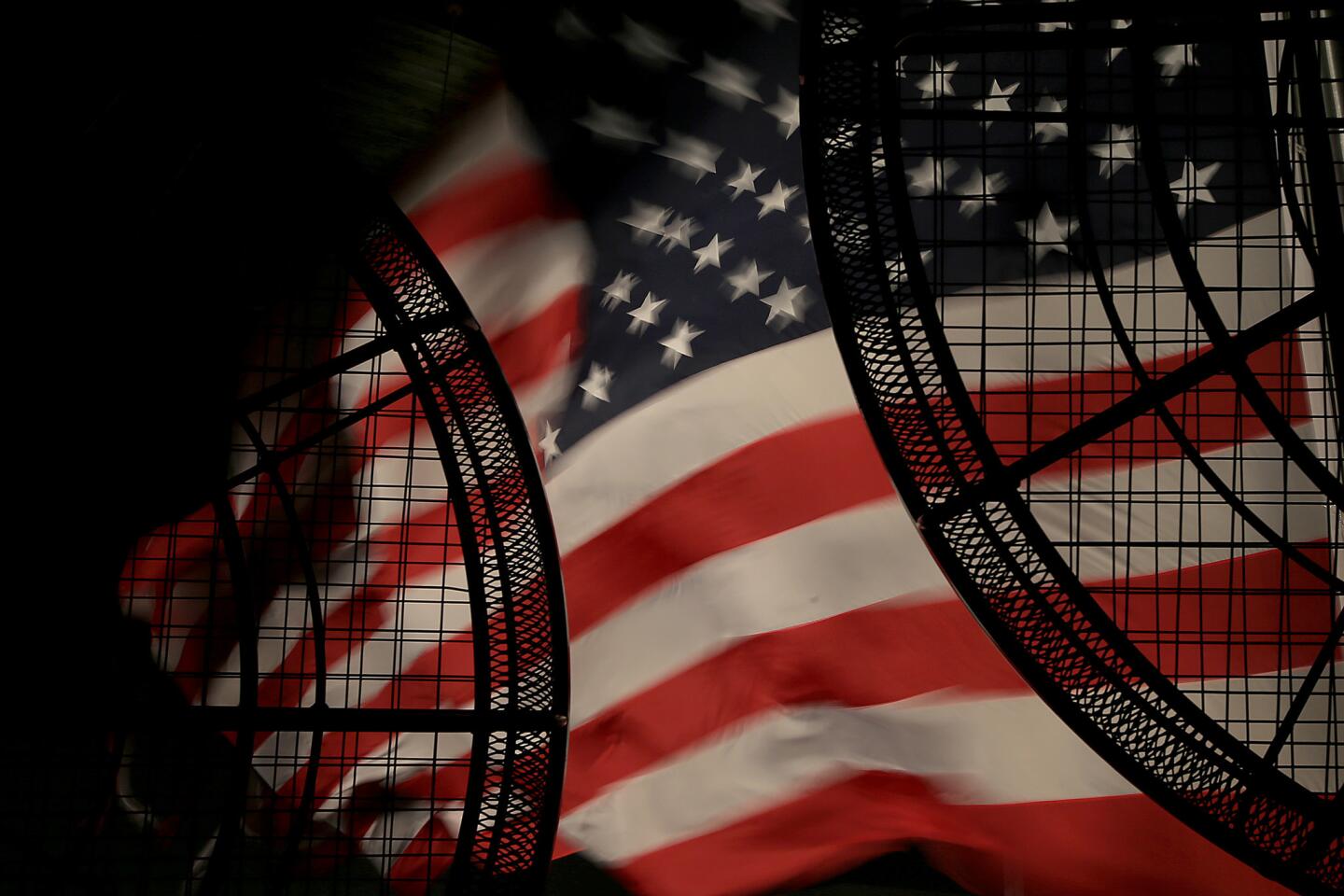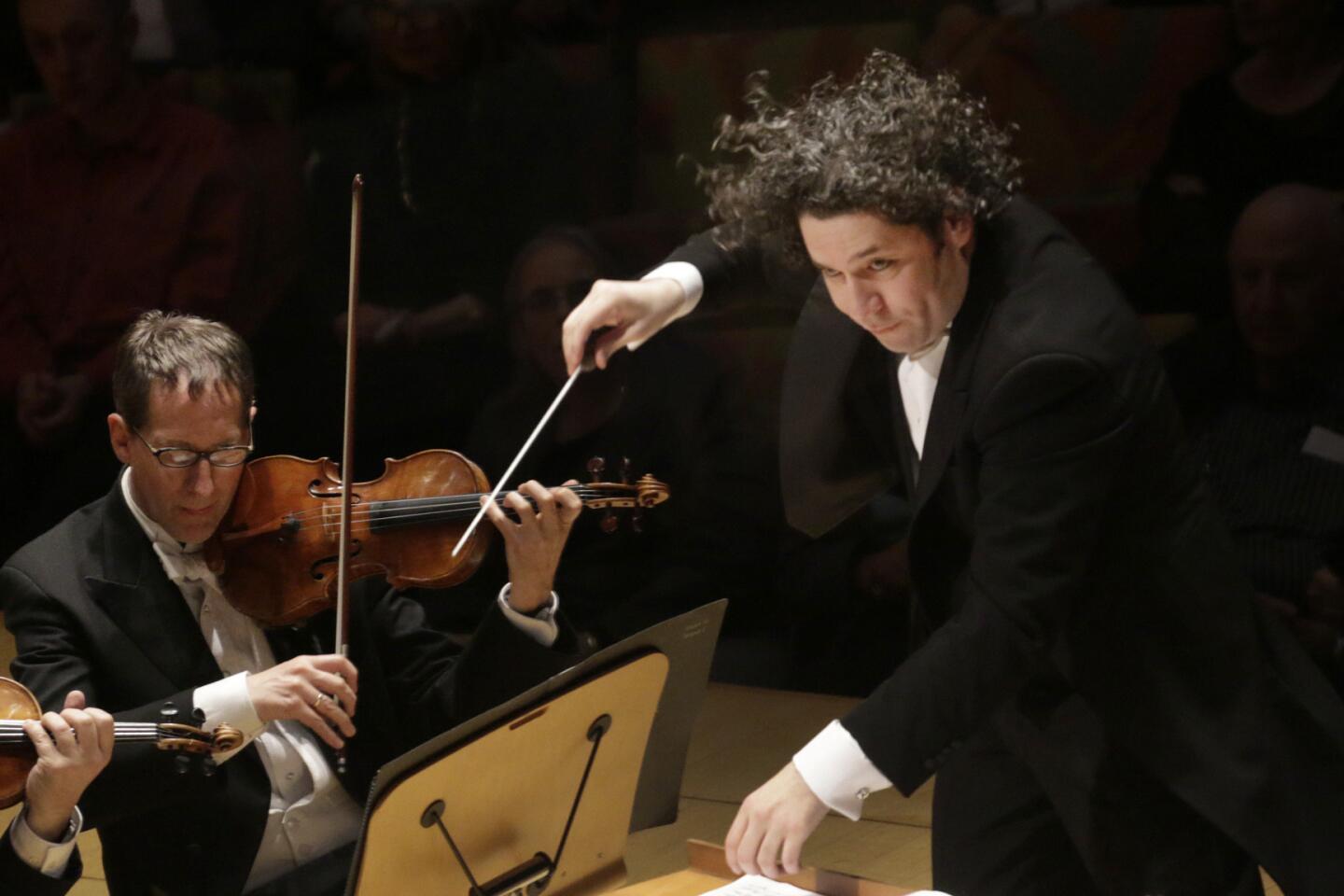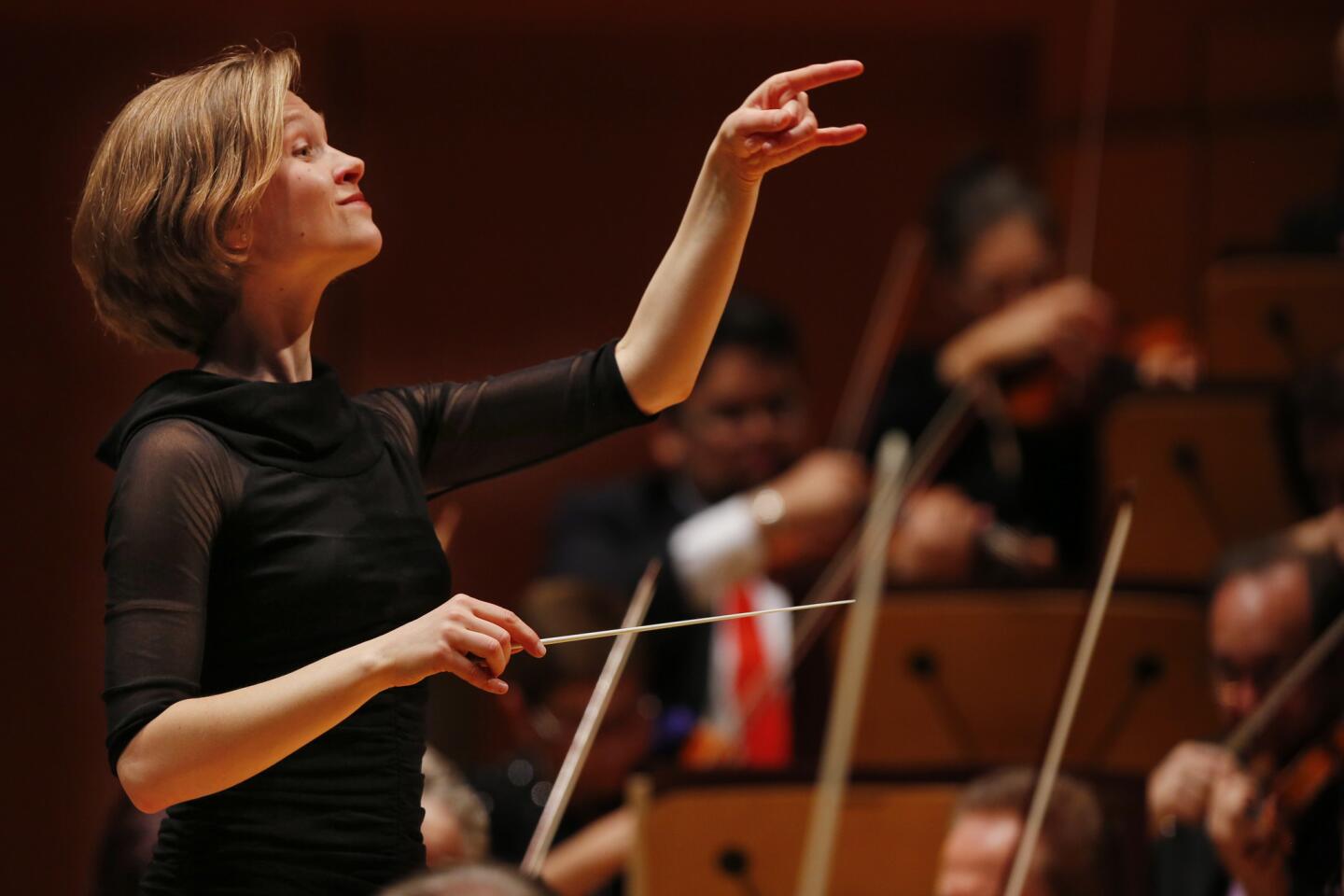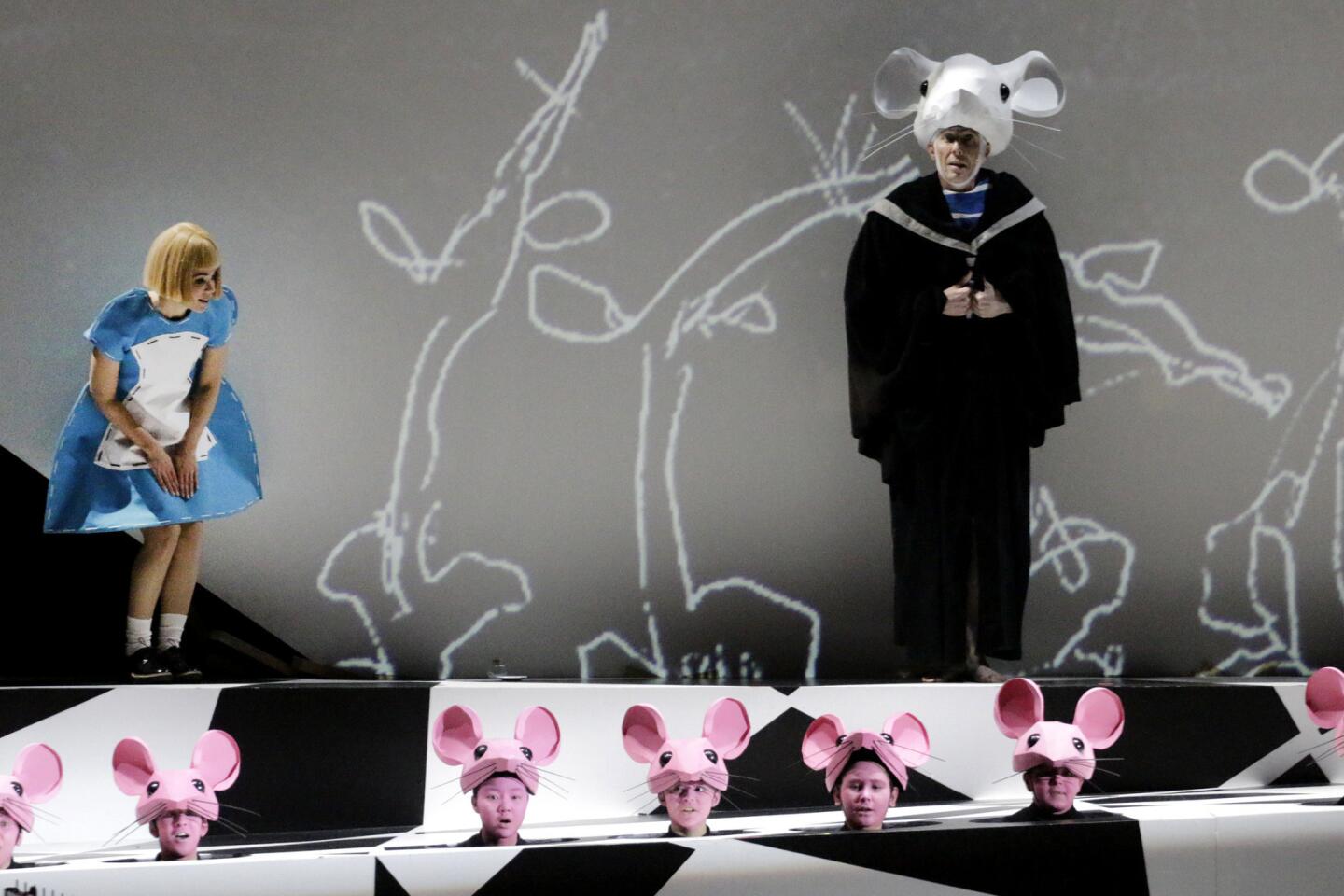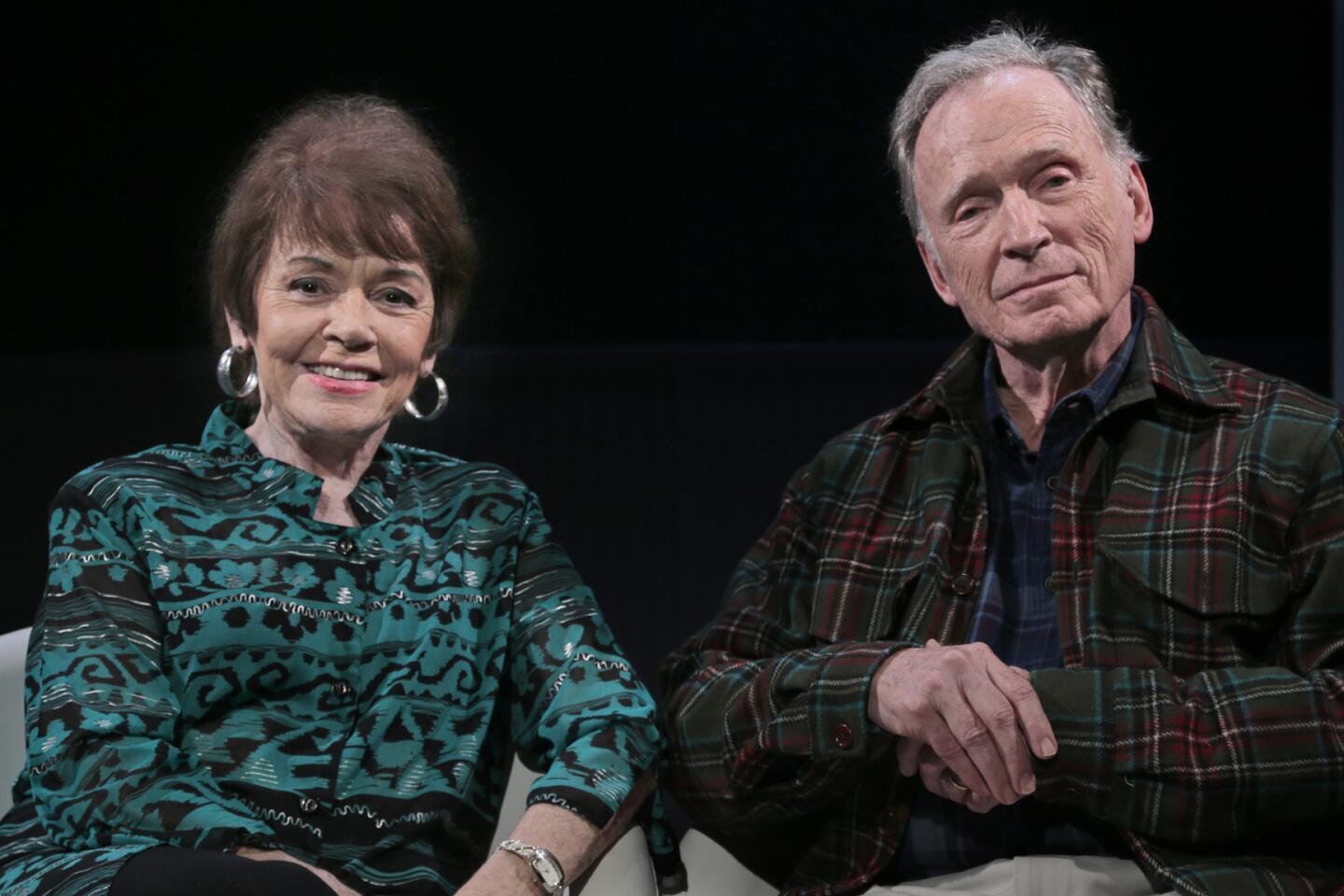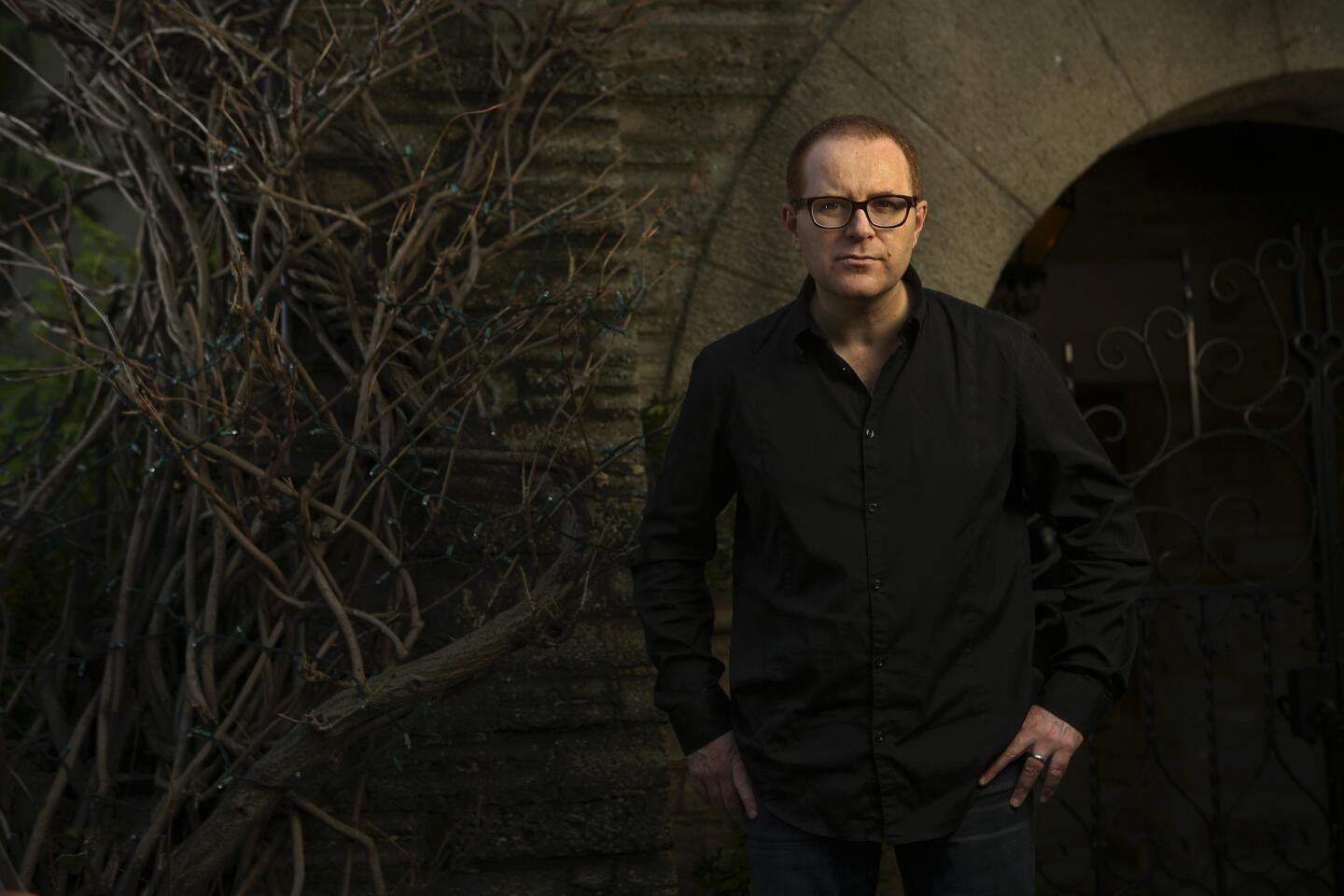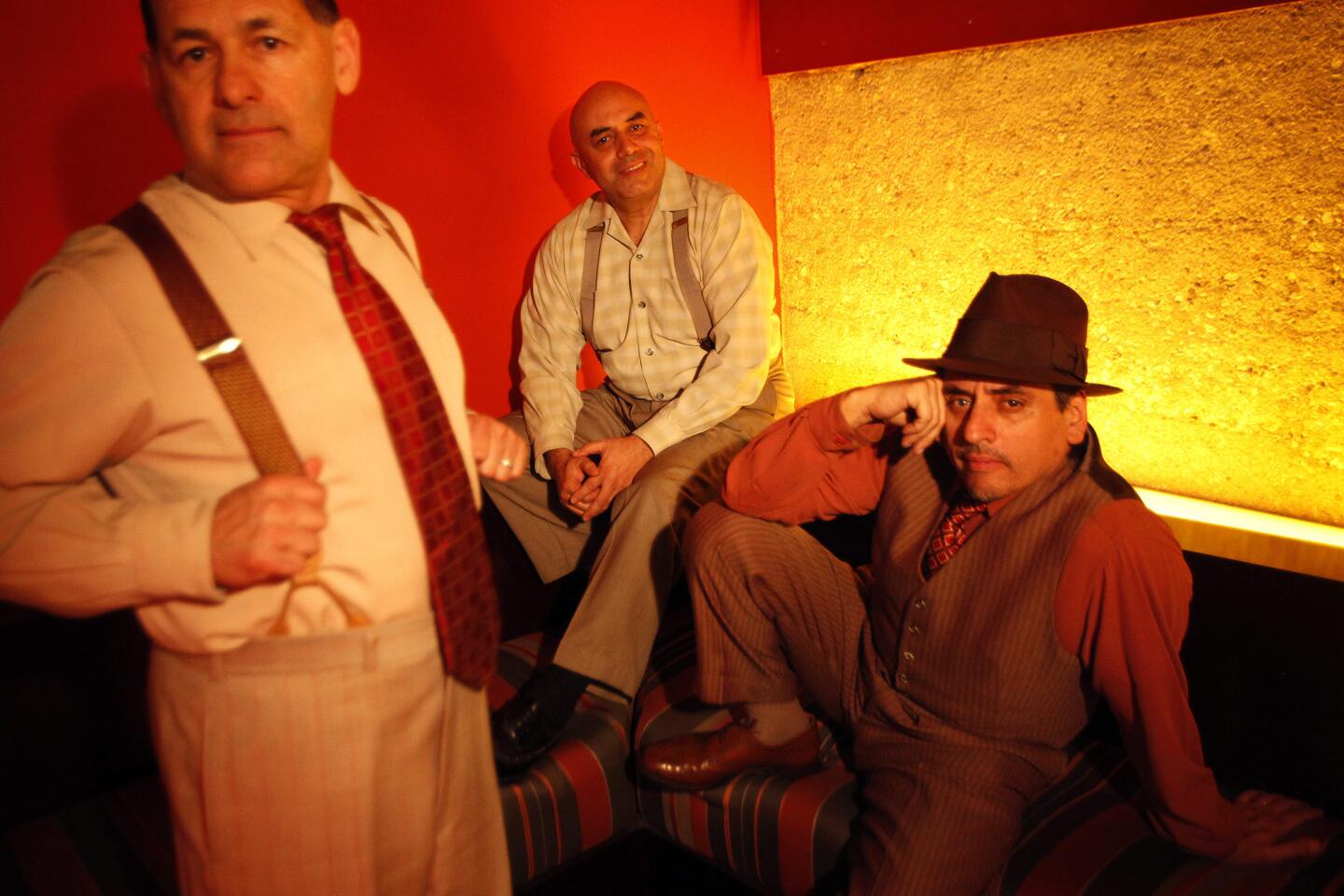Review: Keiko Fukazawa’s ‘Made in China’ show employs ceramics to make the personal political
Keiko Fukazawa’s “Spout Monster #1” is an unassuming little smart bomb, a precision-guided work of art that explodes aesthetic conventions by uncovering buried social and political content in ordinary found objects.
The porcelain sculpture, included in the modest but captivating survey of Fukazawa’s recent ceramics newly opened at the Craft and Folk Art Museum, is composed from two shallow, footed bowls. They are stacked rim to rim and fused together in the kiln, looking like a little flying saucer.
Its top surface is festooned with little teapot spouts turned every which way, as if they were alive — sniffing and probing the surrounding environment. The whole thing is barely 7 inches across, glazed in a pale celadon hue.
------------
FOR THE RECORD:
Ceramic artist: A Feb. 18 review in the Calendar section of the Craft and Folk Art Museum exhibition “Made in China: New Ceramic Works by Keiko Fukazawa” misspelled the name of Ralph Bacerra as Becerra. —
------------
See more of Entertainment’s top stories on Facebook >>
The sculpture is a long way from the sophisticated celadon porcelains once revered at the Imperial Chinese court. The glaze is more pedestrian than refined, confidently and skillfully applied if not exquisitely achieved in delicate transparencies. In down-to-earth forms and playful demeanor, “Spout Monster #1” is more food court than royal court.
Therein resides a good deal of its unexpected authority: Rejects rarely look so good — and this monster is, indeed, built from rejects.
Fukazawa made the sculpture from castoff pieces of porcelain found at a mass-production factory in Jingdezhen, China, where pottery has been produced for more than 1,500 years. Products of an industrialized culture, they’re pieces that didn’t measure up to standardized norms.
“Spout Monster #1” is an assisted readymade, to borrow Marcel Duchamp’s term. The eccentric object has been cobbled together from two potentially useful things — porcelain bowls and teapot spouts — that were already manufactured, like the Frenchman’s 1913 sculpture of a bicycle wheel attached to a kitchen stool. Now that the fused porcelain is without practical function, it has become a strangely compelling focus of contemplative curiosity.
In 1984, Fukazawa moved from her native Japan to Los Angeles. (She teaches at Pasadena City College.) Chafing under customary Japanese social resistance to women being taken seriously as artists, she wanted to work in the city that fostered the extraordinary postwar revolution in clay.
So, like lots of post-Pop art, the rescue and rebirth of discards in her monster-sculpture may well resonate as an autobiographical metaphor. From the 1950s through the 1970s, Peter Voulkos, Ken Price, Adrian Saxe and other artists in that revolutionary ceramic lineage worked with a material that was rarely taken seriously. Picasso and Miro could get away with making pottery, but they were already long-established masters of Modern painting and sculpture.
The younger Angelenos tore ceramics apart through eye-opening, mind-bending means and gave the medium unexpected new life. A technical wizard among them was the late Ralph Becerra (1941-2015), who was Fukazawa’s teacher at Otis College of Art and Design.
Fukazawa’s “Spout Monster #1” indicates how her work makes the personal political, translating her own outsider-ness into a larger social and cultural question. In souvenir sculptures of Chairman Mao, whose head is being overrun by a proliferation of peonies, she becomes even more direct.
Like a voracious fungus, the historic floral symbols of China swallow up his official portrait bust and overtake it. Mao’s famous 1957 command to “let a thousand flowers bloom” gets ironically restored.
The order was an open invitation for his critics in China to voice their dissent to his regime — a flood of complaints that soon led to a violent crackdown. (Ai Qing, the poet and father of artist Ai Weiwei, was among the punished targets.) In a variety of assisted readymade sculptures of Mao’s bust with flowers, Fukazawa’s art celebrates the eruption while encroaching on the tyrant’s mouth to visually silence him.
Sometimes Fukazawa’s work can feel flat and didactic, especially in a group of five “Chinese Landscape” sculptures. Starting with ceramic boxes of the sort that would be manufactured for lamp bases, their flat planes providing a surface for paintings, she added decals that show Song Dynasty landscape paintings.
The landscape paintings’ visual voyage through the world ultimately climbs up to misty mountain peaks reaching high in the sky. A thousand years ago, the orderliness of the visual hierarchy came to represent the achievement of a well-regulated society — nature as a guide to social harmony. The journey reaches heights of wisdom and individual morality.
Into this landscape Fukazawa inserts a pattern of commercial emblems — Louis Vuitton, GE, Target, Wal-Mart, Visa — which overrun the traditional artistic ones. Commercial corruptions intrude.
Pottery reached a zenith in the Song Dynasty, itself a period of great social and economic change when a highly aestheticized way of life was prized inside the court and out. But the “Chinese Landscape” sculptures are fairly obvious parodies, juxtaposing two visions of perfect order. They lack the seemingly simple poetic resonance that makes the “Spout Monster” and “Mao” works so marvelously evocative.
“Made in China: New Ceramic Works by Keiko Fukazawa” was organized by CAFAM curator Holly Jerger. The roughly 30 works are recent, but many of them speak to Fukazawa’s interest in history.
In a dozen Chinese spoons lined up on a wall, the flat bottom of each earthenware bowl sports a portrait decal of Mao at a different stage of his life. The timeline starts at the left with his youth as the son of a wealthy farmer and ends with the classic official image that looms over Tiananmen Square, which virtually everyone in the East and the West knows. It’s the same one Warhol used for his final body of major work, the early 1970s Mao-in-drag pictures.
The first 10 spoons are glazed in bright crimson. No. 11 is pitch black, the final spoon lustrous gold. The sweep of Communist “Red” China leads to the brief dark days of the horrific Cultural Revolution, which are followed by the gilded “socialist capitalism” that feeds the country today. Mao has vanished from the two final spoons.
Jingdezhen, the city southwest of Shanghai where Fukazawa traveled to make this body of work, certainly has a glorious history of producing Imperial ceramics. Those days are long gone.
Today, it’s the smog-choked site of factories mass-producing tea sets, lamps, dishes, vases, souvenirs and other conventional domestic products for consumption in the huge Chinese marketplace. (According to the show’s catalog, 85% of the local economy is based on ceramics.) Fukazawa, still on the outside looking in, smartly ponders the profound changes in her assisted readymades.
‘Made in China: New Ceramic Works by Keiko Fukazawa’
Where: Craft and Folk Art Museum, 5814 Wilshire Blvd., Los Angeles
When: Through May 8; closed Mondays
Info: (323) 937-4230, www.cafam.org
More to Read
The biggest entertainment stories
Get our big stories about Hollywood, film, television, music, arts, culture and more right in your inbox as soon as they publish.
You may occasionally receive promotional content from the Los Angeles Times.
